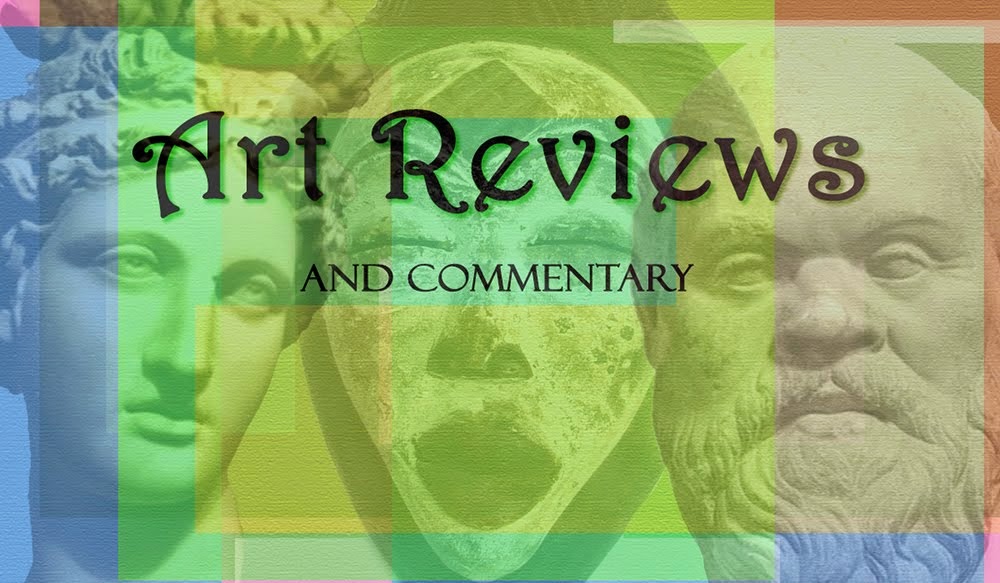Perhaps, even more basic to a new technique and materials is the ever present question: "So what?" or "Why bother? I'm happy with flat 2D art."
My comments are not intended to persuade anyone to follow the approach sketched out below but to provide a description of this adventure in art along with several images (albeit handicapped by presentation on a 2D monitor).
I first tried working in glass at a workshop at San Diego City College that was offered as part of an exhibit by the Digital Art Guild in 2016.
Example 1: Transfer image
 |
| Joe Nalven, Meditation in Glass |
The result was intriguing - combining a soft and delicate sepia image with a variety of specialty paints and glass pieces. The bubbles might not have been attractive to those identifying themselves as 'glass artists,' but to someone who wanted to add texture to what was ordinarily a 2D flat image, the bubbles that were frozen in glass added dimensionality.
What I didn't realize was that when the glass was fired in the kiln, the base image was fired onto the bottom layer of glass allowing all but the iron oxide and carbon elements to remain - otherwise those gasses would form a giant black mass (carbon residue that did not burn off) in the encapsulated fused glass object.
I didn't realize the black mass result when I went to a private glass art venue.* And we had several disappointing failures. Eventually, we solved this problem.
While working out the problem, I decided to try a different approach.
What if I just created a fused glass object that would lie over the printed image - in effect, an 'overstrate.'**
In either case, whether using a substrate or an overstrate, I was able to create the illusive one-of-a-kind that painters and sculptors claimed for themselves. Prints, whether photographic, digital composition, woodcut and the like, were always multiples (unless the artist simply printed one image and destroyed the matrix image used to make many copies or many 'originals').
By mixing media, joining a different substrate or overstrate, each image becomes an original - and not a multiple.
This may not be a concern for 2D flat artists who see themselves as working within that geometry. But, I was bedeviled by that frame of reference and wanted to work with both the 2D flat geometry as well as a 3D textured one.
So, where did my adventure with a fused glass overstrate take me?
Example 2a: Fused glass overstrate with image printed on the reverse side of the glass
| Joe Nalven, Icon (edited photograph) (Left) Joe Nalven, Icon (added fused glass elements presented in a light box) (Right) |
The left hand image above shows an integration of two separates images. The idea was to recreate the icon used in Early Christianity dating back to the 3rd Century CE.
The left hand image was placed below the bottom piece of glass to serve as a reference to where the red fritz in the halo would go as well as for locating the blue black dots inside the halo. A second piece of glass was placed over the bottom glass (encapsulated) and then fired at about 1400 degrees in a kiln.
When the encapsulated glass object came out of the kiln, I took the image to a print shop that specialized in prints for artists.*** I had the image of the icon printed on the back side of the glass overstrate. Unless one actually looked on the reverse side of the glass, one might think the image was fused into the glass when it went into the kiln. However, digital inks would have burned off.
Example 2b:
 |
| Joe Nalven, Eden (edited 2D photographic image) (Left) Joe Nalven, Eden (glass overstrate with image printed on back of glass) (Right) |
One could ask, "Well, is the fused glass embellishment integrated with the 2D flat image any 'better' than simply presenting the 2D flat image?"
Yes and no. First, there is the question of artist's and viewer's preference - image on paper, on metal, with a plexiglass overlay? The fused glass overstrate adds a mixed media element that may or may not accentuate the original image. Second, it is possible to print the image on duratran, which is a semi-opaque surface. One could simply put this substrate with image into a light box and obtain a remarkable result as well (different from the image on paper with no illumination and different from an illuminated image with a fused glass enhancement). Yet another variation.****
If one looks at my own art, the variation in style and technique is evident. The adventure continues . . .
* Joe's Glass Shack, 2426 Auto Park Way, Escondido, CA 92029
*** Pixel 2 Editions, 9520 Padgett St #103, San Diego, CA 92126
**** Kaz Maslanka creates mathematical poetic imagery printed on duratran and set into a light box. I was attracted to Maslanka's image presentation and was guided by his advice on the choice of light box.
